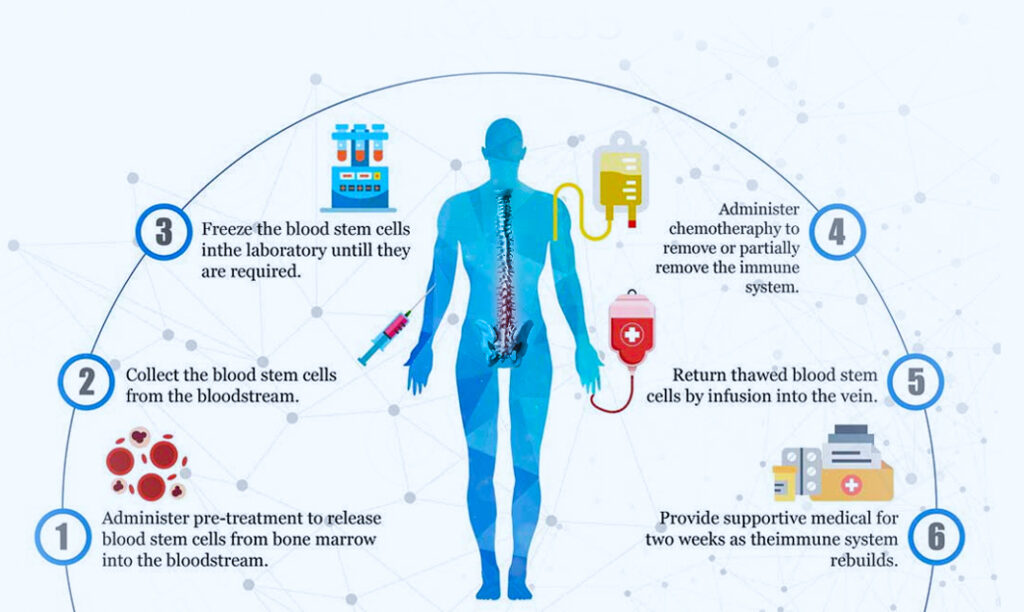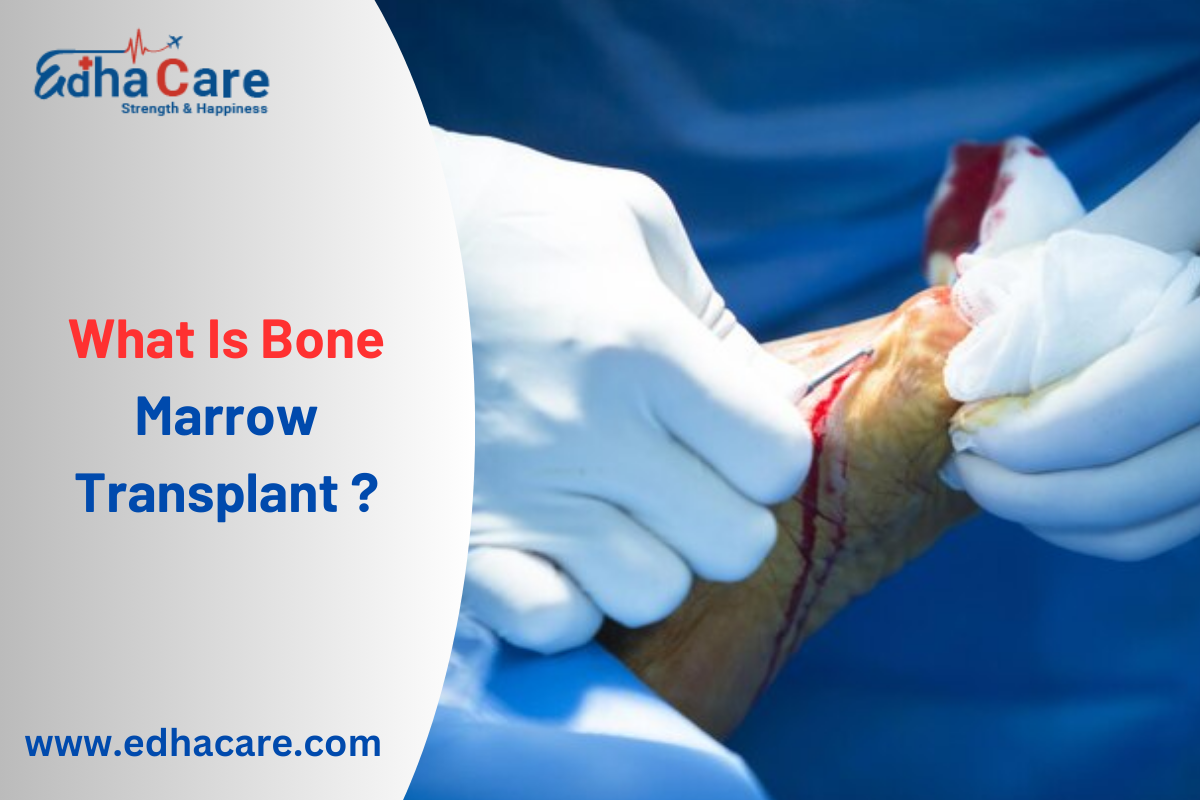A bone marrow transplant is a medical procedure. This procedure will replaced damaged or diseased bone marrow with healthy stem cells to restore the production of blood cells. Bone marrow transplant procedure also known as hematopoietic stem cell transplantation.
Bone Marrow Transplant Procedure:
Bone marrow transplant is a complex and life-saving medical procedure. That involves the replacement or regeneration of damaged or diseased bone marrow with healthy stem cells. During this remarkable procedure offers hope to patients with various conditions, such as leukemia, lymphoma, aplastic anemia, and certain genetic disorders. So it requires careful planning, meticulous preparation, and close monitoring. Because the journey begins with a thorough evaluation of the patient’s overall health, disease status, and availability of a suitable donor.
The Bone Marrow Transplant Procedure is a Multi-step Process:

The goal of a bone marrow transplant is to replace the diseased or damaged bone marrow of the patient with healthy bone marrow cells. These healthy cells can come from different sources:
-
Autologous Transplant:
In this type of transplant, the patient’s own bone marrow or stem cells. which collected and stored before undergoing high-dose chemotherapy or radiation therapy. After the treatment, the stored cells infused back into the patient. To help rebuild the bone marrow and restore normal blood cell production.
-
Allogeneic Transplant:
In the case of Allogeneic transplant, Compatible donor identified, whether typically a family member or an unrelated individual with a close tissue match. The donor’s stem cells obtained through a bone marrow transplant procedure called apheresis. Where blood drawn, and the stem cells are separated and collected. In some cases, bone marrow can be obtained through a surgical procedure called a bone marrow harvest. Where a small portion of the donor’s pelvic bone is removed.
Once the patient and donor are ready, the actual transplant process finally begins. The collected or harvested stem cells carefully processed and filtered to ensure purity and viability. The patient prepared very soon for the bone marrow transplant by receiving conditioning therapy. Which typically consists of high-dose chemotherapy or total body irradiation. These treatments aim to destroy any remaining cancer cells and suppress the patient’s immune system to prevent rejection of the transplanted cells.
-
Syngeneic Transplant:
This is a rare type of transplant where the bone marrow or stem cells come from an identical twin. Because the donor and recipient are genetically identical, there is no risk of rejection, and the transplanted cells can easily establish themselves in the recipient’s body.
If an autologous transplant deemed appropriate, the patient’s own bone marrow or stem cells which collected prior to undergoing intensive chemotherapy or radiation therapy.
Bone Marrow Treatments Serve Two Purposes:
- To eradicate any remaining cancer cells.
- To create space within the bone marrow for the transplanted cells to engraft.
After the conditioning phase:
The actual infusion of stem cells takes place. The stem cells delivered to the patient’s bloodstream through a central venous catheter, similar to the process of receiving a blood transfusion. From there, the stem cells travel to the bone marrow with the help of chemical signals in the body.
During the recovery phase:
During The period following the bone marrow transplant is a critical phase of recovery. The patient closely monitored for signs of engraftment. Which is the successful integration of the transplanted cells into the bone marrow. However Engraftment can take several weeks. During which time the patient may experience side effects such as fatigue, nausea, mouth sores, and increased vulnerability to infections.
To support the patient’s recovery and prevent complications, they receive specialized medical care in a hospital setting. This includes monitoring blood counts, administering medications to manage pain, prevent infections, and support the immune system. The patient may require blood transfusions and platelet transfusions to maintain adequate blood cell counts.
The patient’s immune system significantly compromised. And Precautions taken to minimize the risk of infections, including strict adherence to hygiene protocols. And the use of prophylactic antibiotics and antifungal medications. The patient may be placed in isolation or in a protective environment to reduce exposure to potential pathogens.
As the patient’s body continues to heal and the transplanted cells engraft, the production of healthy blood cells gradually resumes. This process closely monitored through regular blood tests, bone marrow biopsies, and other diagnostic procedures. To assess the progress of engraftment and the overall success of the transplant.
Conclusion
A Bone marrow transplant procedure is a long-term journey that varies for each individual. It can take several months to a year for the immune system to fully recover. During this bone marrow transplant time. The patient requires ongoing medical follow-up, including regular visits to the bone marrow transplant center. To monitor their progress, manage any complications, and provide supportive care.
A Bone marrow transplant procedure is a complex and challenging procedure. It offers tremendous hope and potential for patients facing life-threatening diseases. It represents the remarkable collaboration of healthcare professionals, researchers. And the resilience of the human spirit. Through the transplantation of healthy stem cells, patients given a renewed chance at life. Enabling them to overcome their illnesses and embark on a journey of recovery and renewed hope.

